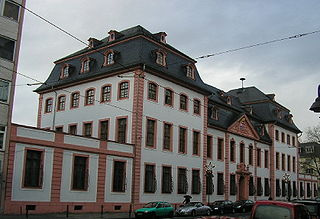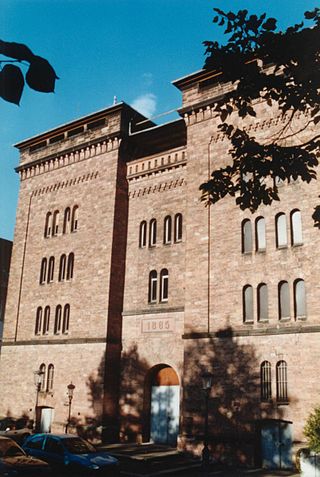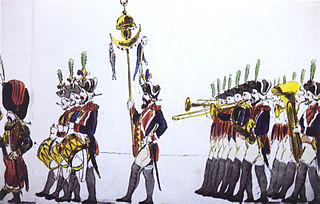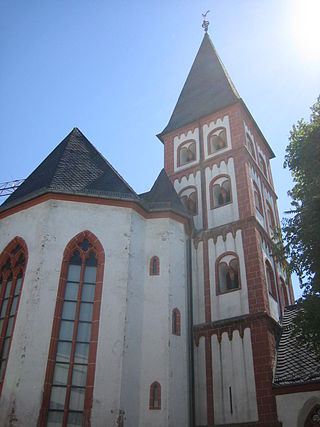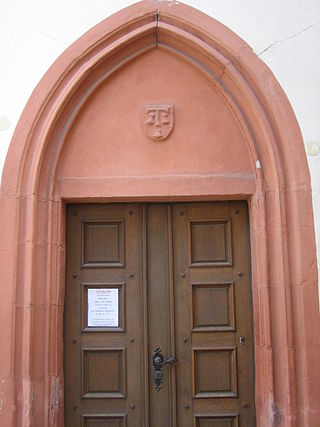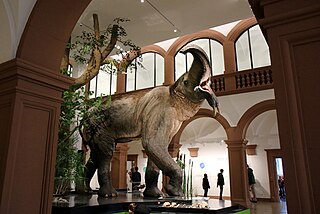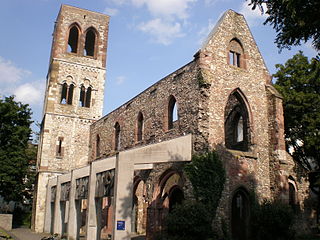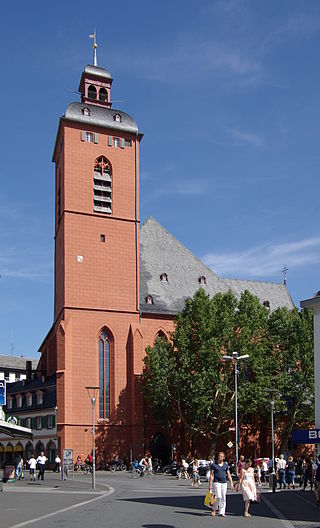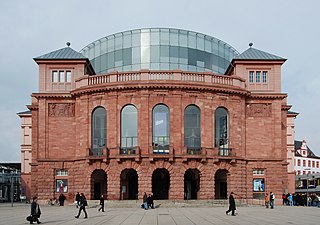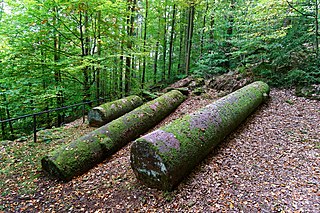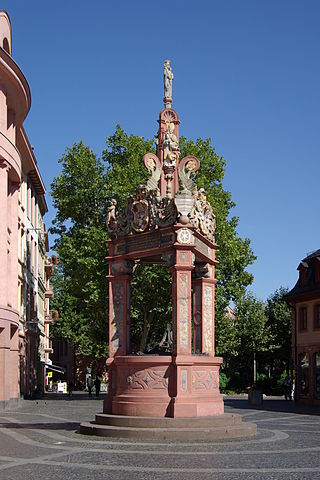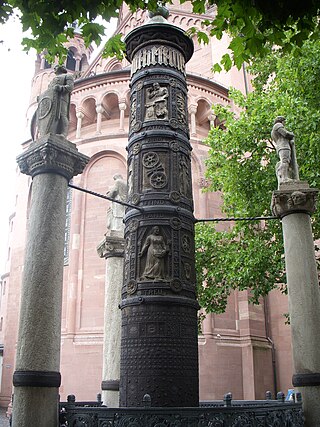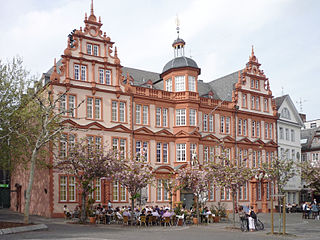Self-guided Sightseeing Tour #1 in Mainz, Germany
Legend
Guided Free Walking Tours
Book free guided walking tours in Mainz.
Guided Sightseeing Tours
Book guided sightseeing tours and activities in Mainz.
Tour Facts
3.9 km
59 m
Experience Mainz in Germany in a whole new way with our free self-guided sightseeing tour. This site not only offers you practical information and insider tips, but also a rich variety of activities and sights you shouldn't miss. Whether you love art and culture, want to explore historical sites or simply want to experience the vibrant atmosphere of a lively city - you'll find everything you need for your personal adventure here.
Activities in MainzIndividual Sights in MainzSight 1: Bahnhofplatz

The Bahnhofplatz of Mainz Central Station is an important square in Mainz-Neustadt in terms of urban development and history. The square is designated as a monument zone and the buildings containing and adjacent buildings as cultural monuments.
Sight 2: Telehaus

The former telegraph office in Mainz, popularly known as the Telehaus, was built between 1928 and 1930 on the south side of Münsterplatz at the junction of Schillerstraße as the result of a competition held in 1926, together with the tax office, with explicit consideration of the neighbouring baroque Erthaler Hof, at Münsterplatz 2–6.
Sight 3: Erthaler Hof
The Erthaler Hof is an aristocratic court in Mainz, Germany. It was built as a family residence there by the Mainz bailiff in Lohr am Main, Philipp Christoph von und zu Erthal. He belonged to the Elfershausen line of the von Erthal family, who came from Franconia. As a cavalier architect and court councillor of the Electorate of Mainz, he was also responsible for the design. The execution was in the hands of Johann Michael Schmitt and Franz Anton Hermann. Construction began in 1734 and was completed in 1739. At the end of 1739, the widower Philipp Christoph moved into the Erthaler Hof with his children, before his first wife Eva Maria died in Lohr after their tenth child. It thus joins the group of baroque aristocratic courts such as the Schönborner Hof, the Bassenheimer Hof and the Osteiner Hof around Schillerplatz.
Sight 4: Fastnachtsmuseum
The Mainz Carnival Museum shows the history of Mainz Carnival since 1837 on about 350 m².
Sight 5: Proviant-Magazin
Proviant-Magazin, also known as Körnermagazin, is a large type of building for the storage of food, which was often part of fortifications and built to be bullet-proof. The magazines were mainly used to store provisions for the military. Primarily for grain, for this reason there was usually an army bakery in the immediate vicinity or in the building itself. In Germany, the administration was subject to the Provisions Office, and this designation was transferred to the group of buildings themselves.
Sight 6: Ranzengardist
The Mainz Ranzengarde was founded in 1837 by Johann Maria Kertell and is the oldest carnival corporation within the Mainz carnival. She therefore also bears the nickname "Mother of all Mainz Guards". In 1838, with the help of the Ranzengarde, the Mainz Carnival Association (MCV) was founded, which is the oldest carnival club in Mainz.
Sight 7: Schoppenstecher
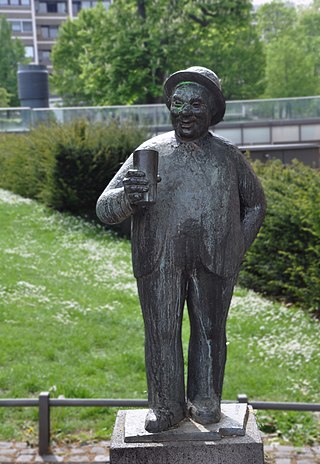
The Schoppenstecher statue is a statue on the edge of Schillerplatz in Mainz between the Schönborner Hof and the Proviant-Magazin, in the former garden of the Schönborner Hof.
Sight 8: Schönborner Hof
The Schönborner Hof is an aristocratic court in Mainz, Germany. It was the seat of the noble family of Schönborn, which was important in the Electorate of Mainz after the Thirty Years' War.
Sight 9: St. Emmeran
The Catholic parish church of Sankt Emmeran in Mainz was founded in the 8th century. The Gothic church building dates back to the 13th century. The church was badly damaged in the Second World War and rebuilt in the 1960s and 1970s. Today, St. Emmeran is home to the Italian parish of Mainz. Her parish belongs to the Mainz deanery of the Diocese of Mainz.
Sight 10: Isis- und Mater Magna-Heiligtum
The Sanctuary of Isis and the Magna Mater was a sanctuary in Mainz, dedicated to Isis and Magna Mater.
Wikipedia: Sanctuary of Isis and the Magna Mater, Mainz (EN), Website
Sight 11: Antoniuskapelle
The Antonite Chapel and the Antonite House in Mainz were built in the 14th century as the Antonihof. The site on the outskirts of early medieval Mainz lay fallow for a long time after the Isis cult was no longer practiced in the sanctuary of Isis and Mater Magna towards the end of the 3rd century AD. In the middle to the end of the 13th and 14th centuries, when Mainz was a free city, many monasteries were built in Mainz, the churches of which can still be seen today. The Augustinian hermit monastery, the Augustinian monastery (1260), the Carmelite monastery (1290), the charterhouse behind the monastery of St. Alban near Mainz (1330) and the monastery of the Antonites, later Armklara.
Sight 12: Neuer Brunnen
The New Fountain in the Bleichenviertel of Mainz is a building from the late Baroque. It was built in the period from 1724 to 1726 by Johannes Weydt. The most striking feature of the fountain is the approximately 12-meter-high obelisk in the center, which is covered with bas-reliefs on various themes. At its base there are a total of four sculptures, each depicting two river gods and two lions. The oval basin and the obelisk are made of red sandstone.
Sight 13: Landesmuseum Mainz
Get Ticket*The Landesmuseum Mainz, or Mainz State Museum, is a museum of art and history in Mainz, Germany. In March 2010 it reopened in full after an extensive renovation.
Sight 14: Naturhistorisches Museum
The Natural History Museum Landessammlung für Naturkunde Rheinland-Pfalz (nhm) in Mainz is the largest museum of its kind in Rhineland-Palatinate. The focus of the exhibitions and collections is on the biosciences and geosciences in Rhineland-Palatinate and its partner country Rwanda. Since 1 August 2019, Bernd Herkner has been the director, succeeding Michael Schmitz.
Sight 15: Karmeliterkirche

The Carmelite Church in Mainz is a listed Roman Catholic church. Since 1924 it has been used by the Carmelite mendicant order. The three-aisled Gothic basilica with turret is located in the old town at Karmeliterplatz 5.
Sight 16: St. Christoph
The church of St. Christoph in Mainz, known in German as St. Christoph zu Mainz, is an example of early gothic architecture. St. Christoph was originally built between 1240 and 1330. The church is associated with Johannes Gutenberg, who may have been baptised there.
Sight 17: St. Josefskapelle
The list of chapels in Mainz lists preserved and no longer preserved chapels in Mainz, Rhineland-Palatinate.
Sight 18: St. Quintin
The Catholic church of St. Quintin is the parish church of the oldest proven parish in the city of Mainz. Today, St. Quintin together with the cathedral community of St. Martin forms the parish of St. Martin's Cathedral and St. Quintin. Thus the cathedral priest is therefore always the priest of St. Quintin as well.
Sight 19: Alte Universität

The Domus Universitatis, the building of the Old University in Mainz, was built from 1615 to 1618 in the Renaissance style. The building served the theological and philosophical faculty of the University of Mainz as well as a Jesuit Latin school.
Sight 20: Staatstheater Mainz - Großes Haus
The Staatstheater Mainz is a theatre in Mainz, Germany, which is owned and operated by the state of Rhineland-Palatinate. Situated on the Gutenbergplatz, the complex comprises two theatres which are connected by an underground passage and also by skywalk. Performances of opera, drama and ballet are presented. Its name was Stadttheater Mainz until 1989.
Sight 21: Gotthardkapelle
Mainz Cathedral or St. Martin's Cathedral is located near the historical center and pedestrianized market square of the city of Mainz, Germany. This 1000-year-old Roman Catholic cathedral is the site of the episcopal see of the Bishop of Mainz.
Sight 22: Heunensäule
The Heunen columns, also known as the Heune columns, are round columns made of sandstone, which were originally intended for the reconstruction of the Willigis Cathedral in Mainz, which burned down in 1009. They were probably completed in the 11th century out of anticipatory business acumen in a quarry in the Bullau Mountains near Miltenberg even before the order was placed. However, the client probably opted for other supports, so that the round columns were never needed. There are said to have been 42 of the columns at one time, in the 18th century there were still 14, around 1960 only eight are known.
Sight 23: Marktbrunnen
The Marktbrunnen in Mainz is a renaissance fountain located at the ″Markt″ of Mainz. It was donated by elector Albert of Mainz and crafted in the workshop of the Mainz sculptor Hans Backoffen. The Marktbrunnen represents one of the first architectural formed decorated fountains of the renaissance.
Sight 24: Nagelsäule
The Nail Column in Mainz is a column erected during the First World War on Liebfrauenplatz in front of the east side of Mainz Cathedral, which was created as part of a German propaganda and fundraising campaign as a war nailing.
Sight 25: Gutenberg-Museum
The Gutenberg Museum is one of the oldest museums of printing in the world, located opposite the cathedral in the old part of Mainz, Germany. It is named after Johannes Gutenberg, the inventor of printing from movable metal type in Western Europe. The collections include printing equipment and examples of printed materials from many cultures.
Sight 26: Eisenturm
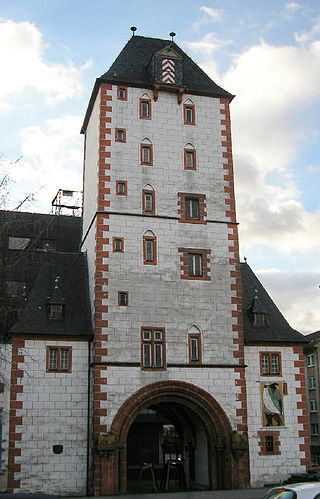
The Iron Tower is a mediaeval tower dating to the early 13th century, and modified in the 15th century, which with the Wood Tower and the Alexander Tower is one of three remaining towers from the city walls of Mainz, Germany. Its name derives from the Iron Market (Eisenmarkt), which was held in the immediate vicinity until the 19th century.
Share
How likely are you to recommend us?
Disclaimer Please be aware of your surroundings and do not enter private property. We are not liable for any damages that occur during the tours.
GPX-Download For navigation apps and GPS devices you can download the tour as a GPX file.
